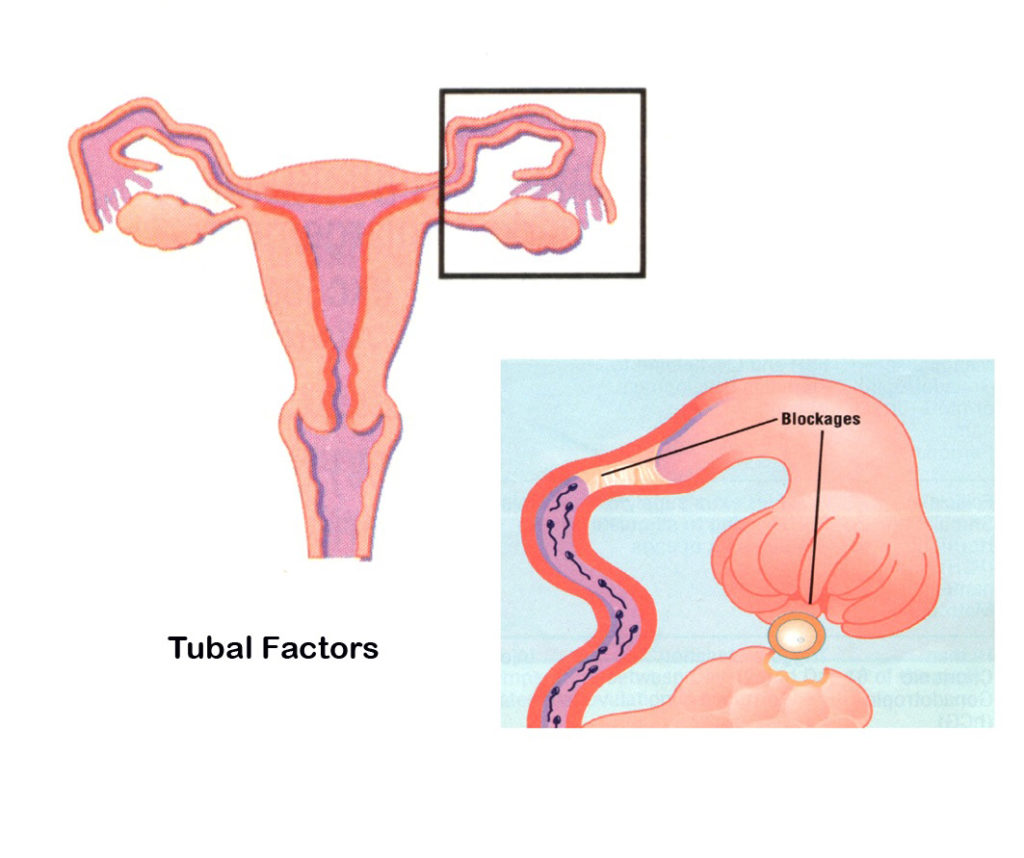Tubal Factors Of Infertility
The fallopian tube connects the ovary (the reproductive organ where egg is formed and released) to the uterus (womb). Fallopian tube is the place where the egg and sperm meet to form an embryo. This embryo is transported to the uterus so that it can get implant there and embryo starts growing inside the uterus to grow for next 9 months.
Fallopian tube is hollow tubular organ; one end of the fallopian tube opens near the ovary whereas the other end opens inside the uterus. It is lined my special lining which helps in transportation of the male and female gametes.
There are two fallopian tubes attached to uterus one on either side.
Any abnormality (either structural or functional) in the fallopian tube may lead to problems to become pregnant.
25-30% couples, who are having problem to have a baby, are likely to have some problem with the fallopian tubes. This can be completely blocked both the fallopian tubes and either one is blocked tube or scarring narrows the tubes. This may be due to various infections like tuberculosis, some genital infections/sexually transmitted infections, pelvic inflammatory disease, endometriosis leading to adhesions and scarring, previous pelvic surgeries causing adhesions etc. Rarely there can be some congenital defect – developmental defect- leading to absent/blocked tubes. In some genetic defects inner lining of the tube is defective and due to that the gamete transport is not possible which in turns leads to fertility issues.
Pelvic Inflammatory Disease (PID) is usually caused a gonorrhea or Chlamydia infection which can travel from the cervix through the uterus to the tubes. Infection in these tissues causes an intense inflammatory response. Bacteria, white blood cells and other fluids (pus) fill the tubes as the body fights the infection. If fallopian tubes are getting filled with such fluid/pus then it is called as hydrosalphinx. During the healing process the delicate inner lining of the tubes can become permanently scarred. The opening of the tube next to the ovary may become partially or completely blocked; scar tissue will often form on the outside of the tubes and uterus. All these factors can compromise ovarian or tubal function and diminish chances for conception in the future. PID can also contribute to a tubal pregnancy (ectopic pregnancy).
Most women with tubal infertility are asymptomatic. Often they don’t realize their fallopian tubes are blocked until they consult a doctor for infertility, though women with extensive tubal damage may experience chronic pelvic pain.
Diagnosis
To confirm whether or not one or both fallopian tubes are blocked, we perform Hystero-Salpingo-Gram (HSG). HSG is an X-Ray test performed at radiology clinic where digital X- Ray facility is available. We do it during 7th to 10th day of the period under oral antibiotic cover. This procedure is a bit painful in which we fit a metal tube at the mouth of the uterus and push special dye through it inside the uterus and then take the films. In first film uterus is seen and second film shows us how the tubes are. Laparoscopy is also useful to visualize the fallopian tubes directly. Laparoscopy is done under general anaesthesia and patient needs to get admitted for it. Laparoscopy is more expensive than HSG, but during laparoscopy we directly see the fallopian tubes and surrounding structures. Another advantage of laparoscopy is we can correct the correctable defects in pelvis which are causing problem for fertility.
Treatments for tubal factors of infertility
If fallopian tubes are found to be permanently blocked, scarred, or damaged, treatment options include In Vitro Fertilization (IVF) or surgery.
Corrective Surgery is an option wherein tubes are less damaged and after corrective surgery patient may become pregnant naturally.
For the blocks which are near the uterine end we do hysteroscopic tubal cannulation to remove or flush the block.
If tubes are blocked near the ovary we can mechanically open the block and open the tube-Fimbrioplasty.
Organized block in the middle segment of the tube can be corrected with tuboplasty in which we cut open the blocked portion of the tube and suture the both the open ends to each other by very tiny sutures.
For the patients who underwent sterilization operation in past, we can reverse the sterilization operation by joining the cut ends of tube again. This procedure is called as tubal recanalization.
All the above mentioned procedures can be done by traditional open method or through laparoscopy.
We have got the expertise to do all above procedures laparoscopically. Only major risk after tubal surgery is ectopic tubal pregnancy in future.


